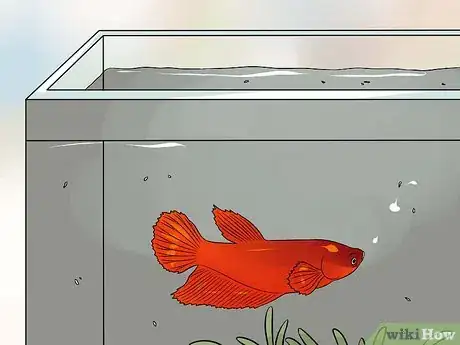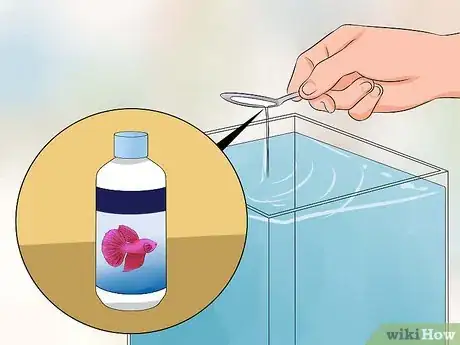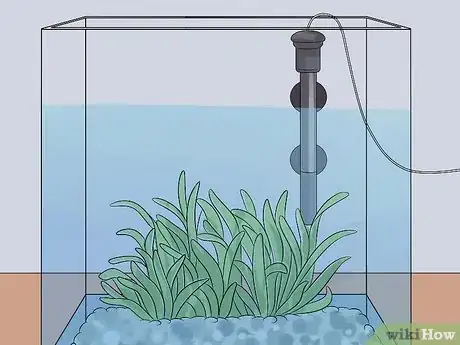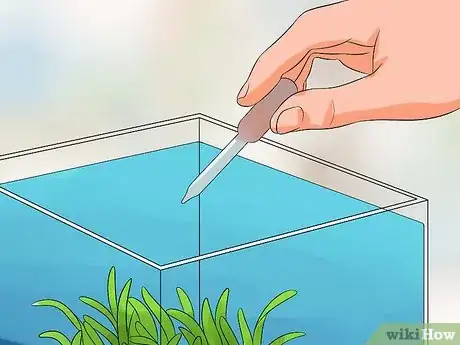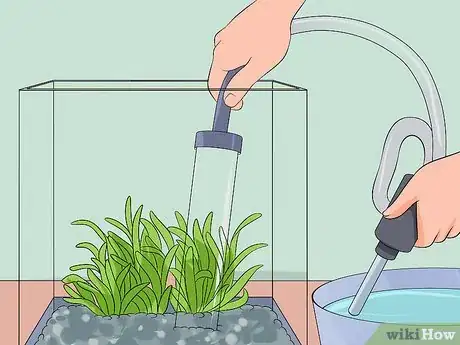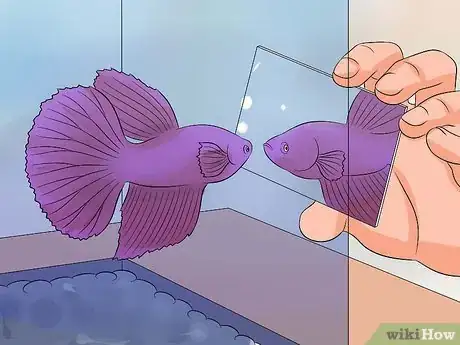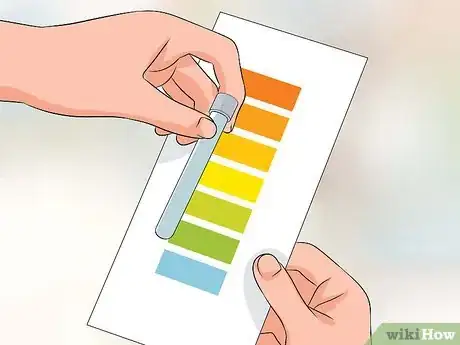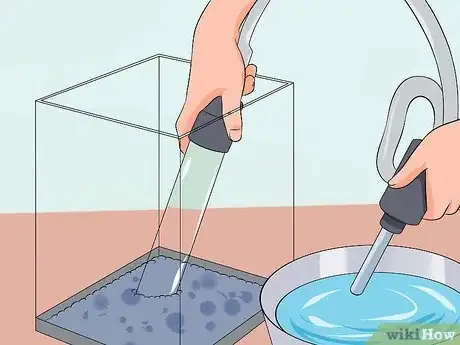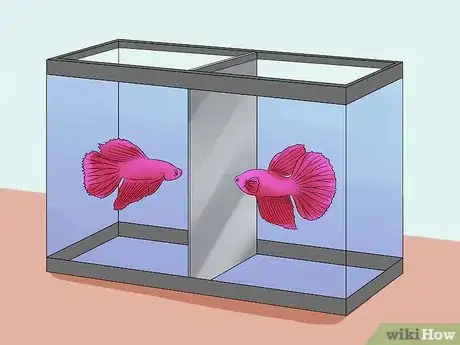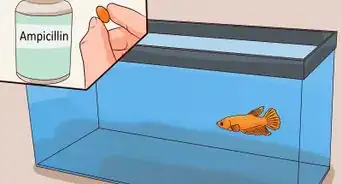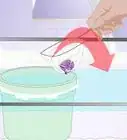This article was co-authored by Pippa Elliott, MRCVS. Dr. Elliott, BVMS, MRCVS is a veterinarian with over 30 years of experience in veterinary surgery and companion animal practice. She graduated from the University of Glasgow in 1987 with a degree in veterinary medicine and surgery. She has worked at the same animal clinic in her hometown for over 20 years.
There are 12 references cited in this article, which can be found at the bottom of the page.
wikiHow marks an article as reader-approved once it receives enough positive feedback. This article received 19 testimonials and 92% of readers who voted found it helpful, earning it our reader-approved status.
This article has been viewed 372,445 times.
Also called Siamese Fighting Fish, bettas are very popular pets. They can be easy to care for, and, under the right circumstances, they can live for several years. Wild betta live, on average, two years. However, in captivity, with the right care, a betta can live up to 10 years.
Steps
Selecting a Fish
-
1Pick a healthy fish. Make sure to acquire your fish from a store or person that takes good care of their stock. It can be difficult to tell what your fish's life was like before you got it. You might not know how old it is, or if it could be carrying illnesses. Betta fish in the store can be stressed, sick, and kept in poor conditions.[1] These things can contribute to the early demise of your pet.
- Healthy fish are more active than less healthy fish.
- Look for signs of physical damage.
- Look for discolorations that could indicate illness. Note that some betta varieties are naturally spotty.
-
2Buy a blue betta. This is because common betta foods have compounds which make red bettas more red, but which measurably boost the blue betta's ability to fight disease instead. These red color enhancers are called carotenoids (think orange, like carrots), and they enhance oranges, reds, and yellows in your betta fish. However, the blue bettas receive not a greater red coloration, but a stronger immune system.[2] Females were even shown to prefer these blue males to others once they consumed these color enhancers.Advertisement
-
3Choose a younger fish. Many people do not know the age of their fish. It is possible to buy a fish late in its life, thus reducing the amount of time you will have it. By getting a younger fish, you increase the chance you will get to have your fish for a long time. However, not always the case, a smaller fish is more likely to be young; As bettas get older, their fins get longer and their bodies get bigger. Though betta naturally vary in size, by choosing a smaller fish, you're more likely to get a betta that is young. If you want to be sure that your fish is young, contact a betta breeder.[3]
- Too young of a fish is not good. They can be shocked more easily by you placing it in a different environment.
-
4Examine the water it is kept in. Check to see if it is dirty. Look to see if there is too much food, indicating that the fish is being over fed, or not eating. These can be telltale signs of poor care, possibly shortening your fish's life.
-
5Look at the other fish. Just because the fish you picked looked healthy, doesn't mean that it hasn't caught an illness from the water a store gives it. It might have caught something from other fish, if it is in a community tank. If many of the other fish nearby seem to be unhealthy, the fish you chose might be, too.
-
6Don't get more than one at a time. Even though it is possible to keep bettas in a tank with other bettas, every fish has a little bit of a different personality. To be sure no fish gets harmed, keep your betta in a tank by itself, and don't buy other fish along with it unless you've done your research.
Setting Up the Tank
-
1Select the appropriate sized tank. Though many people claim that bettas are happy in very small puddles, these fish actually prefer water that is a foot or two deep, similar to the depth of rice paddies in which they are commonly found. Pick a tank that is at least a couple gallons in size, so that your betta has a comfortable amount of space to swim around in. Generally, a tank that is less than three gallons will not be big enough.[4]
-
2Add plants. Plants make a wonderful addition to your tank. Many people choose artificial plants, because they are lower maintenance. Live plants, though requiring some care, can help to improve the quality of your betta's water by filtering it and adding oxygen. In either case, when selecting live or artificial plants, it is important to avoid those with too hard or sharp of a surface. These can damage the fragile fins of your fish. These are some plants that will be safe for your fish.
- Silk plants
- Live Java ferns
- Live Christmas tree moss
-
3Add clean water. This is one of the most essential elements of setting up a tank. Adding water straight from the tap can kill your fish. Chemicals such as chlorine and flushed pharmaceuticals like fluoxetine, as well as many others found in tap water, are very harmful to fish.[5] They can significantly harm your fish and decrease their lifespan. It is crucial to buy a water conditioner to add to your tank's water, before you introduce your pet. This water may also need to sit a few days, so that there is enough dissolved oxygen in it for your fish to breathe.
-
4Warm the water in your tank. When water comes out of the tap, it is not typically the right temperature for your fish. As betta fish are native to Southeast Asia, they prefer warm water. Ideal temperature for their tank ranges from 78-82 degrees Fahrenheit. You may need to buy a heater and thermometer, in order to keep your fish healthy.
- Warm water will make your fish more active, as well as helping with their overall health.
- If they get too cold, they can die.
- When first setting up your tank, it will take some time for the heater to warm the water at first. You should let sit a day or two, before adding your fish.
- In addition, when introducing your fish, it is important to make sure that the water they come from is the same temperature as the water they go into. Let the bag or container holding the fish sit in the new tank's water, long enough to become the same temperature, so the temperature change doesn't shock your fish, causing death.
-
5Select good tank companions. You can't just put a betta in a tank with any fish. They are aggressive. Two male bettas in a tank together will likely kill each other. Though female bettas can be kept together in a sorority, it is also possible that they may injure each other. Sororities should only be. kept by experienced betta keepers. Many people opt to keep bettas in solitary tanks, but if you choose to keep them with docile companions, pick appropriate ones. Make sure you have an appropriate size tank for the tank-mate. [6]
- Neon tetra (in a school)
- Amano or cherry shrimp
- Glass catfish
- nerite snail
- mystery snail
Routine Care
-
1Make a schedule for your routine. Without routine care, your fish will die prematurely. Remember, a fish can't tell you when it is hungry or when its water is dirty. In order to maximize your fish's lifespan, you will need to give it regular care. By created a schedule for yourself, you can help yourself to stick to it.
-
2Feed your fish well. Feed your fish regularly. It is important to select food that is appropriate for your fish. Many stores sell food specifically for bettas, but even then it is important to check the ingredients. Avoid food made mostly of fish meal.
- Many bettas do not like fish flakes.
- Pellets specially formulated for bettas can be found in most fish stores.
- live or frozen fish food, such as blood worms or brine shrimp, are a great supplement to their diet of betta pellets.
- Choose live food if you can. Research demonstrates that formulated food, such as the dry fish food you get in the store, begins to have measurable impacts on a betta's health once it exceeds 25% of their diet.[7] Few pet bettas are privileged enough to get live food all the time. Though live food can be expensive and time consuming, it also greatly benefits a betta's health.
-
1Clean the water. Every so often, you will have to change the water for your fish. This varies depending on the size of the tank, whether or not you choose to use a filter, and if you incorporate live plants. You can buy testing kits to check the water. This will ensure that your fish has a clean, healthy medium to live in, maximizing his life-span potential.
-
2Clean the tank. A fish tank can grow algae on the sides that need to be cleaned off, in order to ensure the quality of the water and also your clear view of the fish. The rocks or sand at the bottom of your tank will also need to be cleaned every once and a while. Waste buildup in the base of the tank can make your fish sick, and kill him. Filters can help with this, but, even then, it may be necessary to siphon waste from the bottom.
- Buy a siphon, so you can draw waste and water from the tank into a bucket.
- Get a magnet cleaning kit or long-handle tank scrubber, so you don't have to get all wet when cleaning off algae.
- Do NOT use soap to clean your tank. A good, physical cleaning (no chemicals or detergents) is often enough.
-
3Play with your fish. Because of their impressive displays of aggression, many people enjoy using mirrors to coax their betta into flaring up their gills. While this can stress your fish out if you do it frequently, it is not harmful to your fish every once and a while. Flaring is good exercise for bettas. Research suggests that while winners of fights between bettas consume more oxygen, there seem to be no significant consequences from these displays.[8] Showing a betta a mirror can give it some exercise, as well as make it less aggressive toward other fish, due to the stimulation.[9]
Dealing with Health Risks
-
1Look for signs of illness. Many times it is easy to tell how your fish is feeling by just looking at it. There are many signs that your fish is ill. Take a moment to closely inspect your fish every once and while, just to make sure they look healthy. This way you can avoid watching your fish suffer from some disease. A few things to look for:[10]
- Loss of appetite
- Scraping on rocks or plants
- Lying on the bottom of the tank
- Swimming upside down or sideways
- White feces
- Faded coloration
- White spots
-
2Take a water sample. Water samples can be analyzed with an at-home kit bought online, or at a pet store. You can also take a water sample into your local pet shop to be examined by a professional. Analyzing your water is one of the best ways to determine the nature of your fish's health problem. It can tell you if you have an imbalance in the water that is causing your fish health problems.[11]
-
3Keep your water at 80 degrees Fahrenheit. If your water is too cold, your fish can get sick. 80 degrees is an optimal temperature for your fish, and less than optimal for many illnesses. This can help to slow the life-cycle of some diseases, like ich, as well as help the immune system of your fish.
-
4Clean your water and your tank. It might not come as much of a surprise, but if your fish is sick, then it is likely your tank is also sick. Take extra care to clean the water, the gravel, and the sides of the tank when your fish is sick. Do not use detergents, as these can kill your fish.[12]
-
5Separate your betta from other fish that are sick or that might injure them. Not only can bettas injure and get injured by other fish, just like other animals, they will catch sicknesses from each other. It is important to separate them in this situation. In this case, it may be necessary to have a small, isolation tank ready.
Warnings
- Don't put rocks or shells in your tank that haven't been purchased from a pet store, or your water quality could suffer, and this could kill your fish.⧼thumbs_response⧽
References
- ↑ http://www.huffingtonpost.com/2013/08/13/shipping-live-fish-betta-delivery-pet-store-photos_n_3748727.html
- ↑ http://beheco.oxfordjournals.org/content/18/6/1139.short
- ↑ http://www.bettatalk.com/selecting_stock.htm
- ↑ http://pets.thenest.com/recommended-aquarium-tank-size-betta-fish-3620.html
- ↑ http://www.ncbi.nlm.nih.gov/pubmed/22489377
- ↑ http://japanesefightingfish.org/what-fish-can-live-with-bettas/
- ↑ https://onlinelibrary.wiley.com/doi/abs/10.1111/j.1365-2109.2010.02564.x
- ↑ http://onlinelibrary.wiley.com/doi/10.1002/ab.20147/abstract
- ↑ http://onlinelibrary.wiley.com/doi/10.1002/1098-2337(1994)20:2%3C135::AID-AB2480200206%3E3.0.CO;2-B/abstract
About This Article
To help a betta fish live longer, feed it a healthy diet that consists of live food, betta pellets, and frozen fish food. You should also clean your betta's tank and water regularly so it doesn't get sick. Keep the water at 80 degrees Fahrenheit, which will boost your betta's immune system and help prevent disease. If your fish does get sick, thoroughly clean its tank and water so the sickness doesn't spread and get worse. To learn how to set up a tank that will keep your betta healthy and happy, keep reading!



